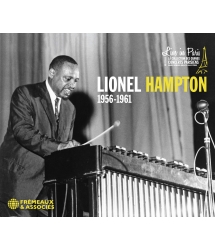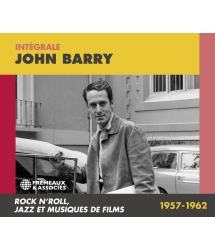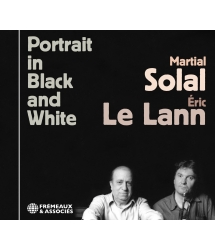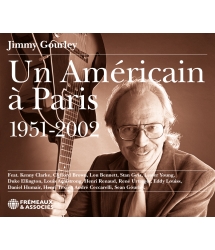- Our Catalog
- Philosophy
- Philosophers of the 20th century and today
- History of Philosophy (PUF)
- Counter-History and Brief Encyclopedia by Michel Onfray
- The philosophical work explained by Luc Ferry
- Ancient thought
- Thinkers of yesterday as seen by the philosophers of today
- Historical philosophical texts interpreted by great actors
- History
- Books (in French)
- Social science
- Historical words
- Audiobooks & Literature
- Our Catalog
- Jazz
- Blues
- Rock - Country - Cajun
- French song
- World music
- Africa
- France
- Québec / Canada
- Hawaï
- West Indies
- Caribbean
- Cuba & Afro-cubain
- Mexico
- South America
- Tango
- Brazil
- Tzigane / Gypsy
- Fado / Portugal
- Flamenco / Spain
- Yiddish / Israel
- China
- Tibet / Nepal
- Asia
- Indian Ocean / Madagascar
- Japan
- Indonesia
- Oceania
- India
- Bangladesh
- USSR / Communist songs
- World music / Miscellaneous
- Classical music
- Composers - Movie Soundtracks
- Sounds of nature
- Our Catalog
- Youth
- Philosophy
- News
- How to order ?
- Receive the catalog
- Manifesto
- Dictionnary











- Our Catalog
- Philosophy
- Philosophers of the 20th century and today
- History of Philosophy (PUF)
- Counter-History and Brief Encyclopedia by Michel Onfray
- The philosophical work explained by Luc Ferry
- Ancient thought
- Thinkers of yesterday as seen by the philosophers of today
- Historical philosophical texts interpreted by great actors
- History
- Books (in French)
- Social science
- Historical words
- Audiobooks & Literature
- Our Catalog
- Jazz
- Blues
- Rock - Country - Cajun
- French song
- World music
- Africa
- France
- Québec / Canada
- Hawaï
- West Indies
- Caribbean
- Cuba & Afro-cubain
- Mexico
- South America
- Tango
- Brazil
- Tzigane / Gypsy
- Fado / Portugal
- Flamenco / Spain
- Yiddish / Israel
- China
- Tibet / Nepal
- Asia
- Indian Ocean / Madagascar
- Japan
- Indonesia
- Oceania
- India
- Bangladesh
- USSR / Communist songs
- World music / Miscellaneous
- Classical music
- Composers - Movie Soundtracks
- Sounds of nature
- Our Catalog
- Youth
- Philosophy
- News
- How to order ?
- Receive the catalog
- Manifesto
- Dictionnary
SUITE POUR VIOLON ET JAZZ
CLAUDE BOLLING
Ref.: FA442
EAN : 3615937386980
Label : Frémeaux & Associés
Total duration of the pack : 45 minutes
Nbre. CD : 1
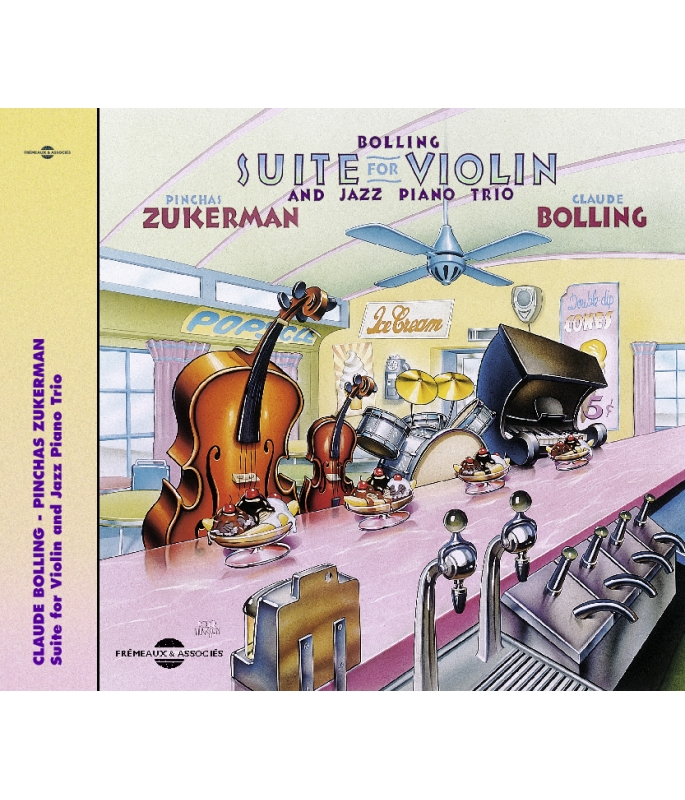
SUITE POUR VIOLON ET JAZZ
- - GRAMMY AWARDS 1976 : MEILLEURS INTERPRÈTES DE MUSIQUE DE CHAMBRE
- - * * * * JAZZMAN
SUITE POUR VIOLON ET JAZZ
Bolling combines unity and diversity. The unity stems from an original harmonic style and evocative strength. The diversity is shown through the tonal mobility and harmonic details, forever situated between the written and improvisation.
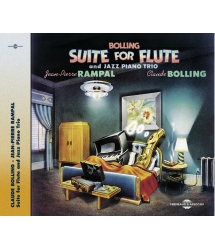
SUITE FOR FLÛTE
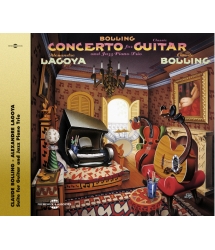
CONCERTO POUR GUITARE
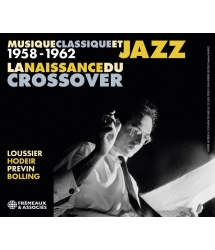
JACQUES LOUSSIER • ANDRE HODEIR • ANDRE PREVIN •...




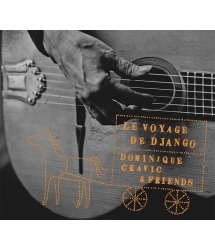
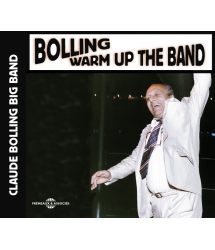
-
PisteTitleMain artistAutorDurationRegistered in
-
1ROMANCEPINCHAS ZUKERMAN00:06:141977
-
2CAPRICEPINCHAS ZUKERMAN00:06:441977
-
3GAVOTTEPINCHAS ZUKERMAN00:02:251977
-
4TANGO (WITH VIOLA)PINCHAS ZUKERMAN00:07:251977
-
5SLAVONIC DANCE (WITH A SWING)PINCHAS ZUKERMAN00:07:541977
-
6RAGTIMEPINCHAS ZUKERMAN00:05:181977
-
7VALSE LENTEPINCHAS ZUKERMAN00:03:461977
-
8HORAPINCHAS ZUKERMAN00:05:271977
CLAUDE BOLLING - PINCHAS ZUKERMAN fa442
CLAUDE BOLLING - PINCHAS ZUKERMAN
Suite for Violin and Jazz Piano Trio
1. Romance 6’12
2. Caprice 6’41
3. Gavotte 2’23
4. Tango (with viola) 7’24
5. Slavonic dance (with a swing) 7’52
6. Ragtime 5’16
7. Valse lente 3’45
8. Hora 5’23
All compositions by Claude Bolling
Pinchas Zukerman : violon
Claude Bolling : piano
Max Hediguer : contrebasse
Marcel Sabiani : batterie
L’idée d’associer jazz et classique a souvent inspiré des personnalités musicales aussi diverses que George Gerswhin, Dave Brubeck, Jacques Loussier voire des groupes comme le Modern Jazz Quartet ou les Swingle Singers. Pour sa part, Claude Bolling aborde ce type d’expérience en 1965 à l’occasion de “Jazz Gang Amadeus Mozart”, savoureux enregistrement en forme de gag musical, où la “Marche Turque” louche vers un jazz-dixieland débridé, teinté d’un humour à la Spike Jones.Quelque temps plus tard, le grand pianiste Jean-Bernard Pommier, lauréat du concours Tchaïkovski, partenaire occasionnel de Claude Bolling dans plusieurs émissions de télévision, lui demande une composition fondée sur le dialogue entre deux pianos, l’un jazz, l’autre classique. De cet échange entre deux langages musicaux se conjuguant dans une création commune naît en 1972 la “Sonate pour deux pianistes”, premier jalon de ce que les Américains vont bientôt appeler la “Crossover Music”.Enthousiasmé par la “Sonate”, le célèbre flûtiste Jean-Pierre Rampal commande alors à Claude Bolling une œuvre associant son style de flûte classique au piano jazz. Dès sa sortie en 1976, cette “Suite pour Flûte et Piano Jazz Trio” devient un gigantesque phénomène musical aux U.S.A., en restant 2 ans en tête du hit-parade et se maintenant 530 semaines dans le classement de “Billboard”.Rapidement le Disque d’Or est décerné à la “Suite” suivi maintenant par le Disque de Platine. Le phénomène se transforme en déferlante quand, de ce mariage fécond entre jazz et classique, naît une heureuse progéniture. En effet, l’état de grâce se renouvelle avec Alexandre Lagoya, Pinchas Zukerman, Yo-Yo Ma, Maurice André et l’English Chamber Orchestra dans une série de compositions où Claude Bolling agence avec bonheur des combinaisons instrumentales subtiles et colorées.La “Suite pour Flûte et Piano Jazz Trio” s’inscrit dans le droit fil de ce pétillant mélange. C’est à la demande de Pinchas Zukerman, violoniste de réputation internationale, que Bolling composa la “Suite pour Flûte et Piano Jazz Trio”. De même que le précédent opus, la “Suite” mêle des styles musicaux d’époques variées, et allie une partie de violon d’une gravité pleine d’âme à la rythmique piano, basse et batterie qui s’emploie à l’attirer vers une atmosphère plus joyeuse.“J’ai rencontré «Pinky» par l’intermédiaire de Jean-Pierre Rampal” raconte Claude Bolling. “J’avais déjà écrit pour les cordes dans des musiques de films, sans avoir encore traité le violon en solo dans une pièce concertante. Pour cette nouvelle œuvre, mon inspiration a été plus romantique et influencée aussi par les musiques d’Europe Centrale.
Stéphane Lerouge
NOTES SUR L’ŒUVRE
“Romance” est un rondo qui s’ouvre sur une mélodie mélancolique et expressive par le violon qui alterne avec des passages jazz plus joyeux pour s’achever dans le sentiment poignant du début.
“Caprice” comprend des alternances entre les motifs du violon et ceux du piano et entre un rythme à trois temps et un tempo de jazz à quatre temps. Ce mouvement met en valeur la virtuosité technique des doubles, triples et quadruples cordes en l’occurence.
La “Gavotte”, une danse populaire française du dix-septième siècle, évoque l’essence même du baroque par des entrées en fugato, des contrechants et une fin en forme de choral, tout en intégrant des notes “blues” avec une certaine audace.
Zukerman passe ensuite à l’alto dont il est le maître incontesté pour le “Tango”, dont la mélodie principale évoque en pizzicato tout le mystère de la séduction. Des passages très contrastés sont des mélanges de sensualité, de romantisme et de musiques de cinéma muet.
La “Slavonie Dance” (With a Swing) contient les combinaisons de mélange de styles les plus contrastés : slave, swing, volubile, rock, jingle et lyrique.
Après un Ragtime a la “Scott Joplin”, le lyrisme français de la Valse Lente permet à Zukerman d’exprimer cette chaleur de sonorité qui lui est propre et qui fait sa célébrité.
L’œuvre se conclut avec une “Hora” aux réminiscences kreisleriennes, en forme de mouvement perpétuel dans une éblouissante démonstration de virtuosité.
Claude Bolling
Six fois lauréat du Grand Prix du Disque en France, Claude Bolling a été plusieurs fois nominé aux Etats-Unis pour le Grammy Award et connaît depuis longtemps une célébrité internationale pour ses talents de compositeur, arrangeur, chef d’orchestre et pianiste.Né à Cannes, Claude Bolling s’est révélé à 14 ans comme un prodige du piano-jazz et a débuté très tôt dans des activités professionnelles. Il avait reçu un solide enseignement de l’harmonie et du contrepoint, mais avait acquis la plupart de ses connaissances musicales en écoutant des disques. Ses premiers enregistrements ont été réalisés à 18 ans, avec son propre groupe de jazz Dixieland, et il est vite devenu l’un des musiciens de jazz les plus populaires d’Europe.Grâce à ses contacts fréquents avec de nombreux jazzmen américains expatriés en Europe dans les années 1950-60, Claude Bolling a cotoyé toute l’histoire du jazz au contact de ses plus grands innovateurs. Son guide en la matière fut Duke Ellington, qui avait lui-même une grande admiration pour Bolling et appréciait énormément sa manière d’interpréter ses compositions.
Compositeur prolifique, Claude Bolling a écrit plus d’une centaine de partitions pour la télévision et le cinéma, composant la musique de films comme “Borsalino”, “The Awackening”, “Willie et Phil”, “California Suite”, “The Silver Bears”, “Louisiane” et “Le Magnifique”.Claude Bolling a enregistré du ragtime, du boogie-woogie, du blues, des thèmes populaires, et il est surtout connu par ses propres compositions qui mêlent de façon unique la musique jazz, pop et classique. C’est ce style, connu sous le nom de “Crossover Music”, qui permit à Claude Bolling d’entrer dans l’histoire de la musique, avec la composition aujourd’hui célèbrissime “Suite pour Flûte et Piano Jazz Trio”.L’intérêt et l’engouement suscités par la “Suite pour Flûte et Piano Jazz Trio” a inité d’autres musiciens classiques de premier ordre, tels que Pinchas Zukerman, Alexandre Lagoya, Yo-Yo Ma, Maurice André, Hubert Laws et l’English Chamber Orchestra, à rechercher les compositions de Claude Bolling pour leurs instruments respectifs. Bolling a répondu par une abondante production dans son style de Crossover Music, toujours basé sur le même trio, avec la “Suite pour Violon, le Concerto pour Guitare Classique, la Suite pour Violoncelle”, et bien d’autres ont suivi.Il dirige le plus célèbre Big Band de jazz européen, qui a déjà travaillé avec des musiciens et des chanteurs de jazz et de musique populaire aussi connus que Dizzy Gillespie, Lionel Hampton, Joe Williams, Carmen McRay, et récemment avec Stéphane Grapelli.
Traduit de l’anglais par Chantal Petit
pinchas zukerman
Né en Israël en 1948, Pinchas Zukerman commence sa carrière dès l’âge de treize ans quand, l’ayant entendu jouer, Isaac Stern et Pablo Casals l’encouragent à se consacrer professionnellement au violon. (Il sortait alors du Conservatoire d’Israël et de l’Académie de Musique de Tel-Aviv, et avait gagné une bourse de la Fondation Culturelle Américano-Israëlienne). Après des études avec Ivan Galamian à la Juilliard School de New York, il remporte le concours international Leventritt en 1967 et se produit alors en soliste dans une série de concerts avec les plus grands orchestres du monde. Couvert d’éloges depuis sa première saison 1968-1969 avec Léonard Bernstein et le Philharmonique de New York, il impressionne par sa maîtrise technique et sa qualité d’interprétation qui en fait, selon un critique munichois, “de loin la plus grande révélation au violon depuis des années”. Si le Times de Londres voit en lui un violoniste “littéralement hors pair”, il a également reçu d’excellentes critiques en tant que chef d’orchestre et artiste.Zukerman a enregistré un répertoire couvrant toutes les époques. Parmi ses disques les plus populaires, citons le “Concerto pour Violon” d’Elgar, avec Daniel Barenboïm et l’Orchestre Philharmonique de Londres, et différents enregistrements de Vivaldi, pour lesquels il est à la fois soliste et chef d’orchestre.
---------------------
english notes
The idea of associating jazz wilh classical has often inspired musical personalities as diverse as George Gershwin, Dave Brubeck, Jacques Loussier, and even groups such as the Modern Jazz Quartet or the Swingle Singers. As far as Claude Bolling is concerned, this type of experience was first approached in 1965 with “Jazz Gang Amadeus Mozart”, a savory recording in the form of a musical gag, where the “Turkish March” canters towards unbridled dixieland jazz, tinted with Spike Jones humor.Later on, the young pianist Jean-Bernard Pommier, winner of the Tchaikovsky prize, who had performed with Claude Bolling in several television programs asked him to compose a piece based on a dialogue between two pianos, one jazz, the other classical. From this exchange between two musical languages joining together in a single creation, the “Sonata for Two pianists” was born in 1972, the first landmark in what the Americans would soon call “Crossover Music”.Enthused by the “Sonata” the renowned flutist Jean-Pierre Rampal asked Claude Bolling to write a musical piece associating his classical flute and the jazz piano. In 1970, as soon as it was published, the “Suite For Flute and Jazz Piano Trio” became a gigantic musical phenomenon in the United States, keeping its number one position for two years and remaining for 530 weeks on the “Billboard” chart.
Soon, the “Suite” attained Gold Record status, followed by Platinum and this happy marriage between jazz and classical music gave birth to a number of happy offsprings. Indeed, the état de grâce is renewed with Alexandre Lagoya, Pinchas Zukerman, Yo-Yo Ma, Maurice André and the English Chamber Orchestra in a series of compositions where Claude Bolling arranges subtle and colorful instrumental combinations.Bolling’s “Suite for Violin and Jazz Piano Trio” is an encore of his original sparkling melange. The internationally acclaimed violinist Pinchas Zukerman commissioned Bolling to write the “Suite for Violin and Jazz Piano Trio”. Like its Predecessor, this “Suite” blends styles from many eras, and frequently the violin part seems tender and somber while the piano, bass, and drums attempt to coax it into a gayer mood.“I met ‘Pinky’ through Jean-Pierre Rampal”, says Claude Bolling. “I had already written for strings while scoring for films, but I never wrote for solo violin. In this new work I was influenced by romantic and Central European music”.
NOTES ABOUT THE WORK
The “Romance”, a rondo, begins with a melancholy, expressive melody in the violin, which alternates with more cheerful jazz interludes, but the movement ends with the poignant opening sentiment.
The “Caprice” includes fluctuations between segments featuring the violin and the piano and between double and triple rhythms. The movement highlights the virtuoso string technique of multiple stops (including quadruple stops) where the violinist executes more than one note at the same time.
The “Gavotte”, a French dance popular in the seventeenth century, retains the Baroque essence with fugato entrances, counterthemes, and a choralelike ending, mixed with thematic blues material in a slightly irreverent mood.
Zukerman switches to the viola (the alto voice of the string family) in the “Tango”, whose main theme is a seductive, mysterious presentation using plucked strings. The contrasting sections are a mixture of vampish romantic and “Silent-movie” music.
The “Slavonic Dance” (With a Swing) contains the most contrasting combination of styles within one movement : slavonic, swing patter, rock, rinky-tink and lyric.
After the Joplinesque Ragtime, the “Valse Lente” is a lyrical French waltz that affords Zukerman the opportunity to demonstrate the warmth of sonority for which lie is renowned.
With tinges of Fritz Kreisler, the “Hora”, the final movement, has a perpetual motion, concluding the work with fiery, virtuoso displays.
Claude Bolling
Claude Bolling, six times a winner of the French Grammy award Le Grand Prix du Disque and nominated several times for the American Grammy, has received consistent international acclaim as a composer, conductor, arranger, and pianist.Born in Cannes, France, Bolling was recognized as a jazz piano prodigy at the age of 14 and soon began to make professional appearances. He had formal training in harmony and counterpoint, but acquired most of his musical education by listening to records. His first recordings were made with his own Dixieland group when he was 18, and he subsequently became one of the most popular jazz musicians in Europe.Bolling’s frequent contact with the numerous expatriate jazz musicians in Europe during the 1950’s and 60’s exposed him to the entire history of jazz as performed by its major innovators. His mentor was Duke Ellington, who greatly admired and praised Bolling’s interpretations of his compositions.A prolific composer, he has written over hundred scores for TV and feature films such as “Borsalino”, “The Awakening”, “Willie and Phil”, “California Suite”, “The Silver Bears”, “Louisiana” and “Le Magnifique”.Bolling has recorded ragtime, boogie-woogie, blues, popular standards, and most widely known, his own compositions in a unique mixture of pop, jazz, and classical styles. It was the latter style, known commonly as “Crossover Music”, that enabled Bolling to make musical history with his by-now famous composition “Suite For Flute and Jazz Piano Trio”.The interest and excitement generated by “Suite For Flute and Jazz Piano Trio” promoted other leading classical musicians, including Pinchas Zukerman, Alexandre Lagoya, Yo-Yo Ma, Maurice André, Hubert Laws and the English Chamber Orchestra to seek Bolling compositions for their respective instruments. Bolling responded with a prolific output in his classical crossover style still based on his trio : “Suite For Violin”, “Concerto For Classic Guitar”, “Suite For Cello”, and many others followed.He is leading the most famous European jazz big band which has worked with well known Jazz and popular instrumentalists and vocalists, including Dizzy Gillespie, Lionel Hampton, Joe Williams, Carmen McRay and recently with Stéphane Grappelli.
pinchas zukerman
Born in Israel in 1948, Pinchas Zukerman began his career when he was only thirteen years old; Isaac Stern and Pablo Casals heard him perform and urged him to pursue the violin as a profession. (Prior to this he had studied at the Israel Conservatory and the Academy of Music in Tel-Aviv and had won a scholarship from the American-Israel Cultural Foundation). After studies with Ivan Galamian at the Juilliard School at New York, he won the 1967 Leventritt International Award competition and then embarked on a series of orchestral appearances with the leading orchestras of the world. Ever since his highly-acclaimed debut with Leonard Bernstein and the New York Philharmonic in the 1968-69 season, he has been hailed for his technical accomplishment as well as for being the kind of performer who caused a Munich reviewer to write “for years there has not been anything like an equivalent violinistic discovery”. He has been praised by the London Times as being “absolutely without peer among violinists”. He also received great praise as a conductor and as a violist.Zukerman has retarded works from every musical period. Among his most popular releases are the Elgar Violin Concerto with Daniel Barenboïm conducting the London Philharmonic Orchestra and his series of Vivaldi recordings in which he acts as soloist and as conductor.
CD Claude Bolling Pinchas Zukerrman © Frémeaux & Associés (frémeaux, frémaux, frémau, frémaud, frémault, frémo, frémont, fermeaux, fremeaux, fremaux, fremau, fremaud, fremault, fremo, fremont, CD audio, 78 tours, disques anciens, CD à acheter, écouter des vieux enregistrements, albums, rééditions, anthologies ou intégrales sont disponibles sous forme de CD et par téléchargement.)
